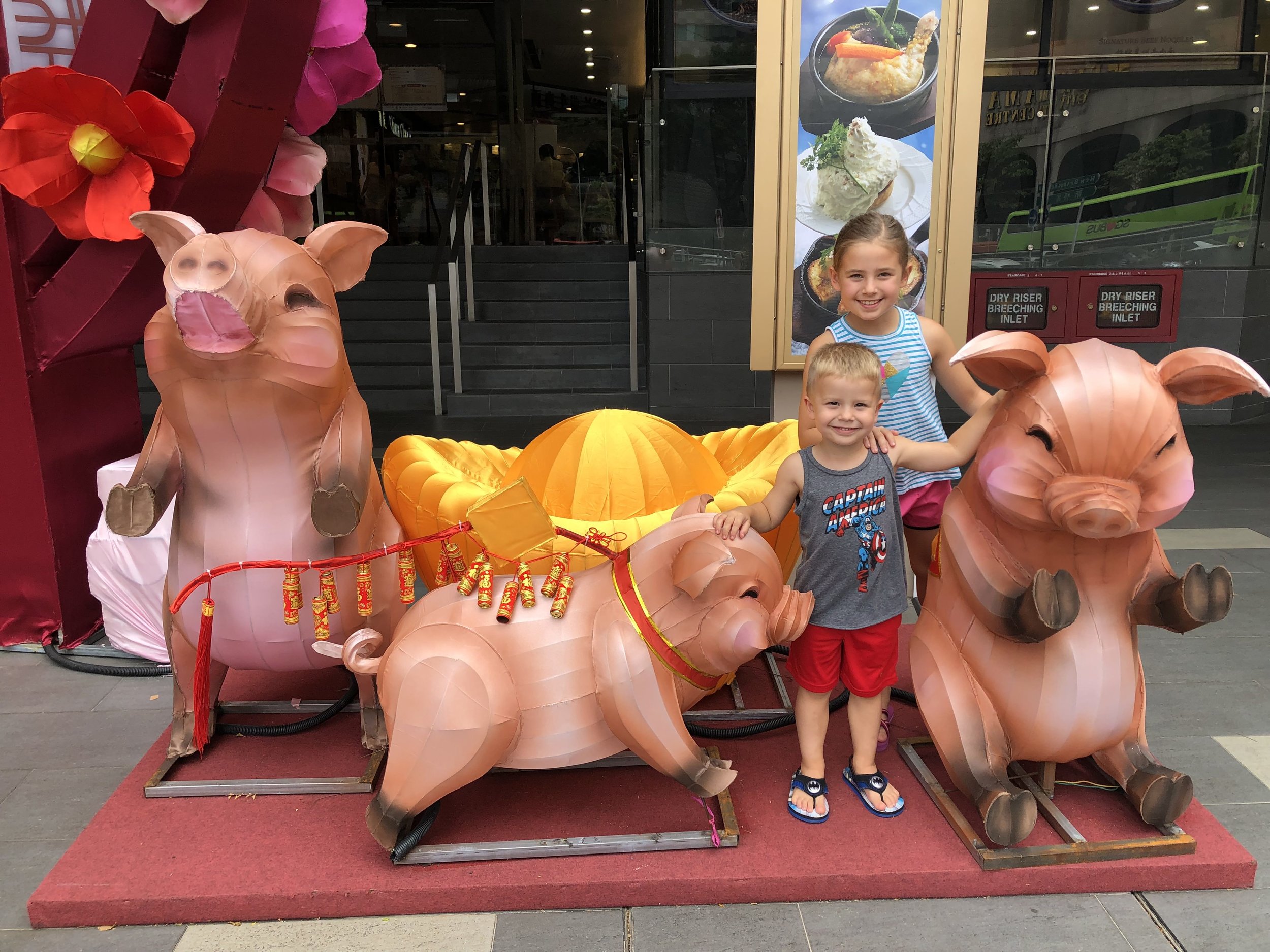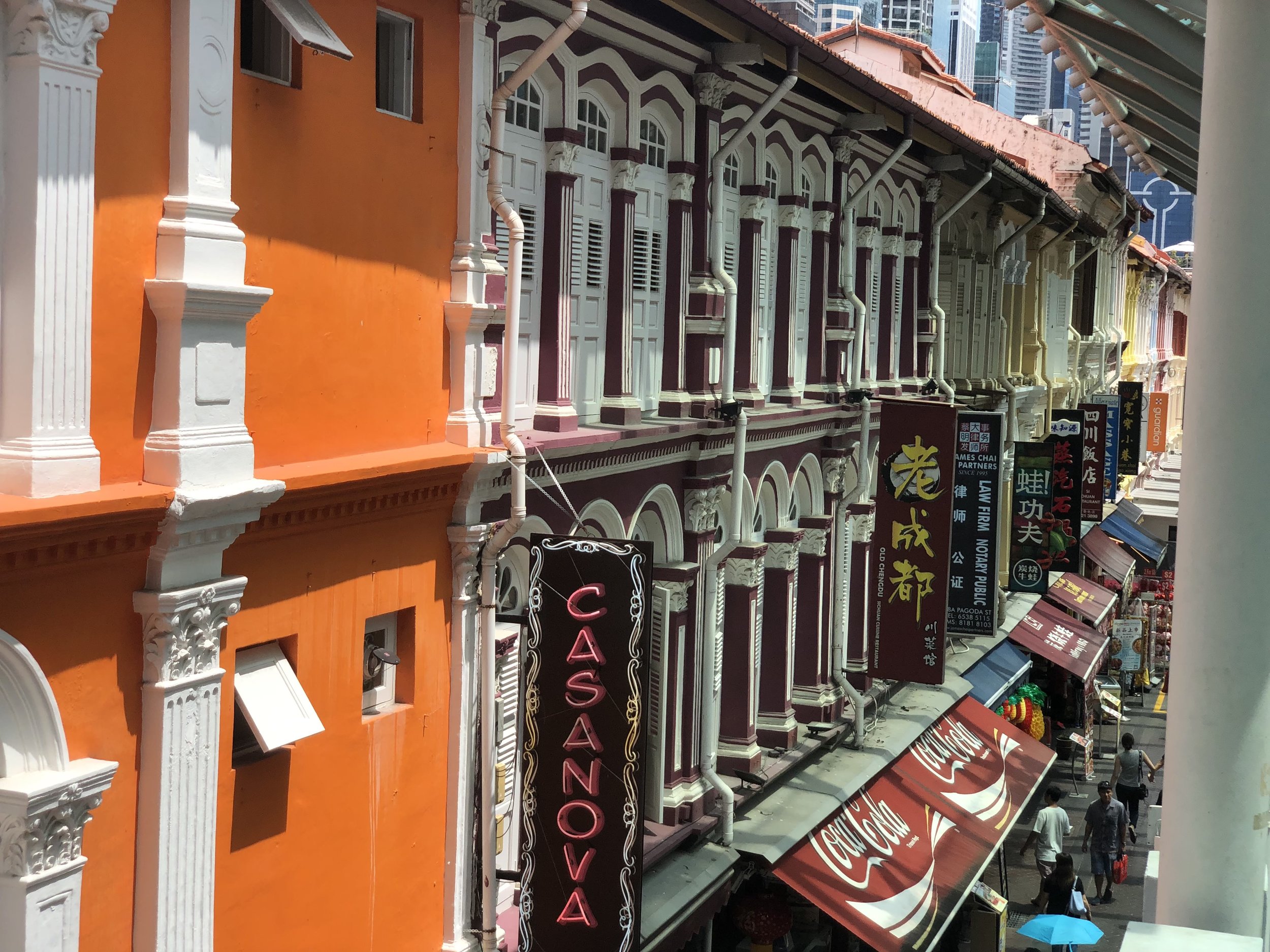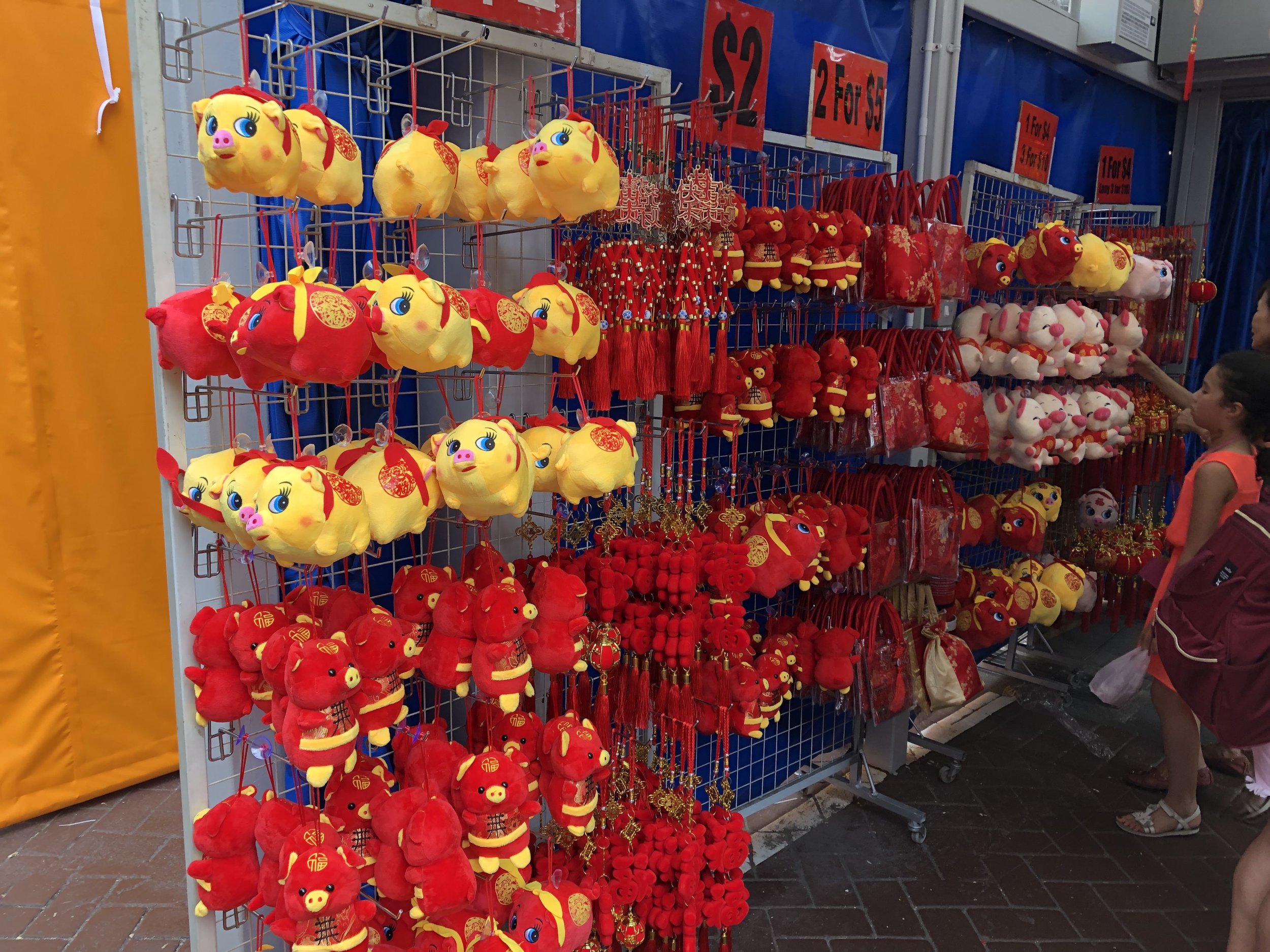Chinese New Year
It’s Chinese New Year or the Lunar New Year 2019! In honor of this, I thought I’d share a bit of what we’ve learned about this holiday as well as several visits to Chinatown. I’m by no means an expert, but this is what we’ve learned and experienced.
One of the things I was not expecting was the use of the word “auspicious.” I have never heard the word auspicious used so much. It’s not a word commonly used in the United States. However, in Singapore, it cropped up more and more as the Chinese New Year grew closer. It was found in emails, advertisements, and signage; everywhere really. Even McDonald’s got in on the action with some (delicious) “prosperity twister fries” only available for Chinese New Year.
The most auspicious colors for the Year of the Pig are red, pink, gold, and orange. While walking through Chinatown, multiple people touched Theo’s hair or attempted to covertly take photos of him. One man looked at him and mouthed “gold” in wonder. That’s when we realized that Theo has a lucky hair color, which explains the fascination some of the Chinese people we meet have with him.
Red is found everywhere. It is the predominant color in many of the booths in Chinatown. It’s also the color of envelopes that are given as gifts, primarily from elders to younger members of the family. These envelopes contain money and are to “anchor the year” and bring wealth and good fortune to the receiver. I’ve read that the envelope tradition started as a red cord with a coin, like this one Amelia received from her Chinese teacher, and then gradually became an envelope over time. Some of the envelopes are decorated quite elaborately.
Oranges and mandarins also symbolize luck. There are mandarin trees outside many businesses and in public spaces. Mandarins are also given as gifts.
We saw some koi fish made of gelatin-like substance called agar agar powder. They, like many things associated with the Lunar New Year, are auspicious. They symbolize surplus or prosperity and good fortune.
Food is a big part of Chinese New Year. As in many cultures, there are certain dishes that are made for this holiday. My personal favorites are the pineapple tart (my absolute fav!) and the almond cookie. We also really like bak kwa, a sweet beef jerky.
Amelia begged us to buy her a qipao, or Chinese dress (also known as a cheongsam in Cantonese). She was very excited when her teacher encouraged her to wear it to school on Friday before Chinese New Year! Her teacher added a cherry blossom to her hair after she got to school. This kid was on cloud nine!
While in China Town the kids really wanted to get a coconut to drink. We got them one, and they promptly rejected it in favor of the pineapple drink Tom and I were sharing. They also tried satay for the first time. Amelia complained it was “too spicy,” and then ate most of the plate. Theo was a little less enamored with it, and he had to be convinced to try both the beef and the chicken. Neither of the kids liked the peanut sauce, which Tom and I thought was delicious.
We also had an opportunity to try a Singaporean ice cream sandwich; one version with rainbow bread, the other with a wafer.
On the way to Chinatown.
In Chinatown.
Many of the shops contained maneki-neko, or the waving lucky cat. The cat originated in Japan, but is common in many of the shops in Chinatown.
At school, both kids got to experience a Lion Dance. Tom also experienced a Lion Dance at work. The lion is (you guessed it!) auspicious in Chinese culture and is thought to bring luck and good fortune.
At work, Tom participated in a “prosperity toss” called yusheng in Mandarin or lo hei in Cantonese. It is a tradition found in Singapore and Malaysia. Tom was told the tradition of eating yusheng is not common in mainland China. In this tradition, noodles; vegetables such as radishes, carrots, ginger; peanuts; a variety of sauces; and salmon are mixed together and “tossed” like a salad with chopsticks. The higher the toss, the greater the prosperity in the coming year for the tosser.
Gong Xi Fa Cai!
(Wishing you wealth and prosperity!)
♥ Rebecca




























